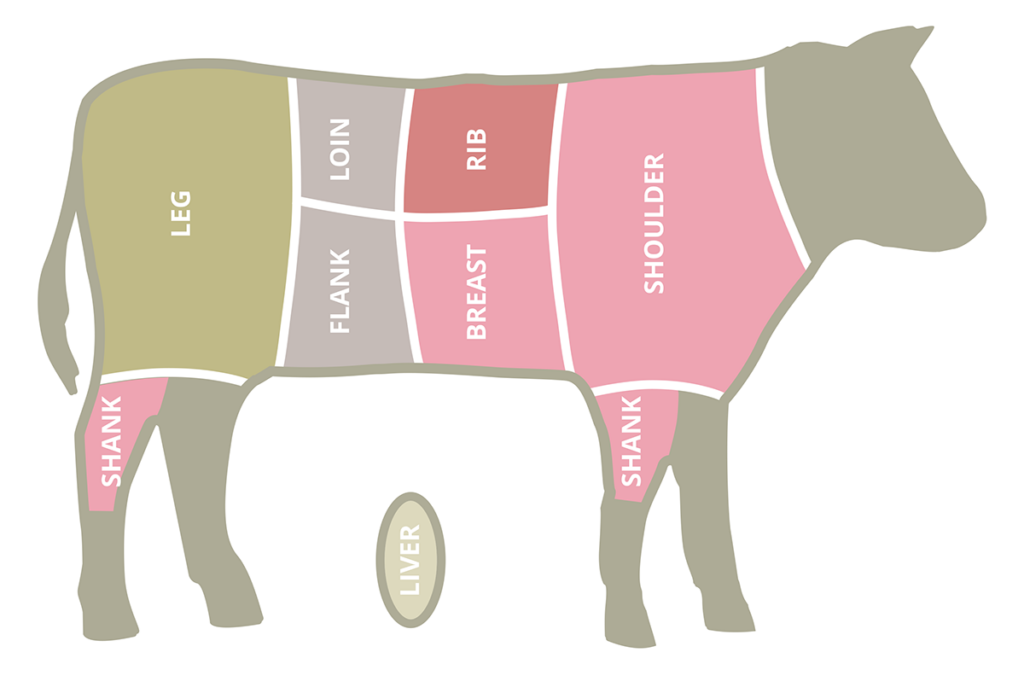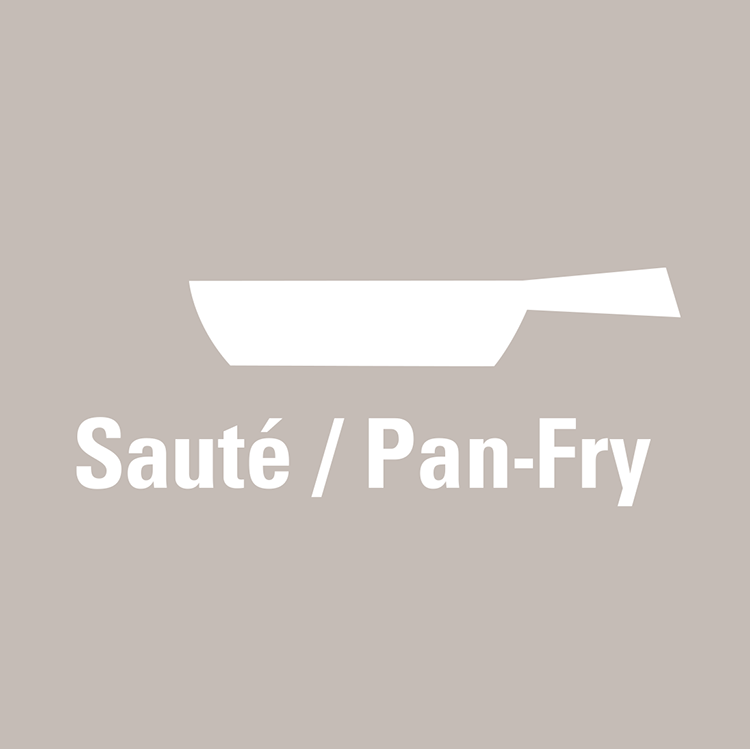The Fab 4 (Most Familiar Cuts)
Below, are 4 cuts that you’ll likely find in the main-stream grocery store or butcher. Look for veal that comes partially prepared as well, like meatballs or breaded cutlets. For a broader range of cuts, a butcher specializing in Italian, German or Middle Eastern foods could likely help you out.
Cutlets are thin cuts of veal from the leg, loin or rib sections. Also known as scaloppini, veal scallops, schnitzel or Wiener schnitzel, veal cutlets are ¼ to ¾ inch thick at most. Cutlets are often coated with seasoned flour or bread crumbs before cooking to protect against overcooking. Cutlets can be quickly pan-fried, or when stuffed and rolled, braise or bake as roulade. Since fully trimmed and boneless, there is no waste with veal cutlet.
Chops align with steaks for beef. Chops from the Rib or Loin sections are best for dry-heat cooking like grilling or pan-frying. Shoulder chops are best pan-fried to brown and then simmered slowly in a braising liquid like white wine or stock to make a luscious sauce.
Shank is typically cut across the bone into rounds and tied ideally. It is famous for the classic, osso buco, and provides the bonus of rich bone marrow that can be added to the sauce or enjoyed on its own. Best for moist-heat cooking at a slow simmer in a covered pot that holds in the steam to tenderize.
Ground veal is designated as Lean with the same maximum fat content (17%) as lean ground chicken, turkey, beef and pork. It can be sold as is, as meatballs, or in a ‘duo-’ or ‘trio-mix’ pack along with ground beef, and/or ground pork. Ground veal provides a rich texture and subtle flavour to meatballs, meat loaf and tourtière when used alone or as a blend of ground meats. Depending on the use, ground veal can be cooked in many different ways.
Veal liver has a delicate, rich flavour and silky texture which could be a pleasant surprise to those who claim to be liver adverse. A quick pan-fry to medium at most is best.








